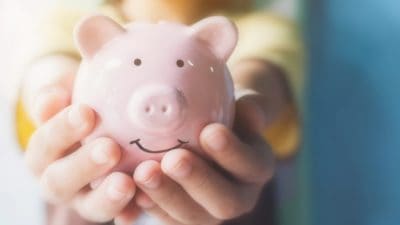Ask any five Canadians if they have side gigs and three will respond yes. That’s how popular side gigs have gotten since the pandemic started in 2020. But Canadians with side gigs have a tendency to make one big mistake: they give into lifestyle inflation.
What’s lifestyle inflation?
Lifestyle inflation happens when your monthly expenses rise alongside extra income. For example, you might decide to move into a swanky new apartment after getting a big promotion at work. You’re making an extra $500 a month, you reason, why not upgrade to an apartment worthy of your new status?
Sometimes lifestyle inflation happens naturally. For instance, you might get a new job that transforms you from a broke student to a business professional with more money than you know what to do with. Instead of inhabiting that single bedroom flat with your two buddies, you decide to get an apartment by yourself. It’s lifestyle inflation, but hey — you don’t have to share a bathroom anymore.
Lifestyle inflation becomes a problem, however, when you live paycheque to paycheque, and a new source of income makes you spend only more money. It becomes a problem when you have your essentials covered, and you use the extra income to increase your discretionary spending. It becomes a problem, in short, when you fail to save, invest, or use your extra income to reach financial goals.
How should you use money from your side gig?
Now, don’t get me wrong: if you’re using your side gig to pay your bills, get out of debt, or save up for a car or house (which could technically be lifestyle inflation), by all means — use your extra income to do these things.
On the other hand, if you’re living an extravagant lifestyle while spending your extra money frivolously, you’re missing the point of a side gig. The side gig isn’t supposed to give you more discretionary income. When done right it helps you hit financial goals.
Like retirement. Imagine, for a moment, that you bring in an extra $300 a month with your side gig. If you invest that money for the next 30 years, assuming an 8% average return, how much do you think you’ll be left with?
Probably more than you think. In 10 years, your initial investment of $300 will grow to $55,550, if you continued to invest $300 per month. After 20 years, your monthly $300 will grow to $178,184. And after 30 years? You’re almost to half a million, $450,389.
And that’s only $300 a month. If you invested $500 a month, you would have $748,460 after 30 years! That’s a thousand times more valuable than the newest tech and an eventful Saturday night.
How can you get your side gig income on track?
First, you’ll want to establish a financial goal worth working for. For instance, if you’re struggling to save for a downpayment, use your side gig to set aside more money in your TFSA or savings account. Or if you have no retirement saving, use your side gig income to start putting money into a brokerage account.
Once you have a goal established, set up automatic withdrawals from your chequing account into your savings or brokerage account. Automatic withdrawals will prevent you from interfering with your extra income. When payment hits the bank, you won’t even see the money. It goes right where it needs to go, leaving you with little temptation to spend it.
Finally, practice delayed gratification. Understand that you won’t enjoy the money now, but you will enjoy it later. When you’ve amassed enough savings, you’ll have more purchasing power for big expenses, like a house or retirement. At that point, all the extra work you’ve done through your side hustle will have a clear purpose: you didn’t waste your time because, in the end, all the accumulated cash helped you accomplish something your normal paycheque just couldn’t do.








